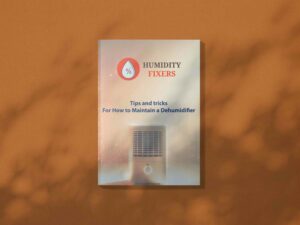A Detailed Guide On Buying The Best Air Purifier For Viruses
Last updated on: July 1, 2024.
The recent worldwide pandemic has caused several households to pay more attention to health and wellbeing. While staying at home offers some measure of protection, it cannot guarantee your family’s safety. More than ninety percent of our time is spent indoors, especially during various lockdowns.
The Environmental Protection Agency(EPA) has estimated that indoor air can be two to five times more polluted than outside air. In addition to viruses and bacteria, indoor air can contain harmful contaminants like allergens, dust, and chemical emissions. This means that despite our best intentions to stay safe, poor quality indoor air can worsen health conditions in the long term. Luckily, a solution for this problem can be implemented fairly easily.
Air purifiers are household products that work to remove contaminants, pollutants, and viruses from the air. The air purifier traps harmful particles in the air to provide safe and clean air to your household. Clean and fresh air has several health benefits, including relief from respiratory problems, reduced allergic reactions, better sleep, and improved immunity.
Air purifiers can protect you from harmful contaminants in the air and the most common viruses. Air purifiers are not fully guaranteed to keep you from getting covid-19, but they can significantly reduce your chances of falling ill while also improving your general health.
There are several types and models of air purifiers currently in the market. It can be hard to choose a specific model for your requirements. There are many different factors to consider, such as technologies, sizes, power usage, and efficiency.
Not all air purifiers can trap viruses. Some air purifiers are better equipped for dealing with viruses, while others focus more on allergens like dust, mold, and pet dander. We have done the research for you and have determined which air purifiers work best against viruses in 2022.
Do air purifiers work for viruses?
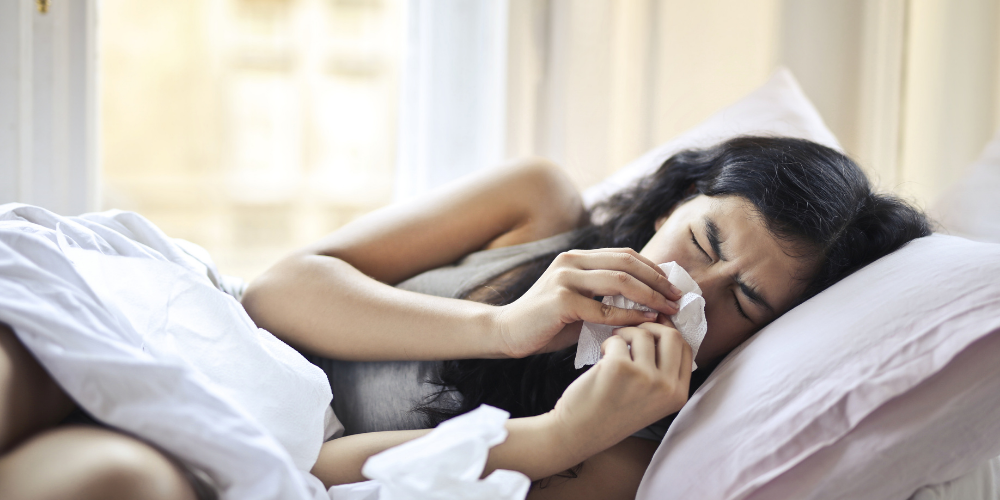
Air purifiers work to trap tiny harmful particles found in the air. This includes microscopic viruses. The efficiency of an air purifier depends on the type of technology they use. The most common technologies used in air purifiers are as below.
HEPA filters are the most common type of filters used in air purifiers and currently set the standard for the industry. They are made of interwoven glass fibers that create a maze that traps particles. They can trap 99.7 percent of common contaminants like dust, mold, pollen, bacteria, and viruses. Some HEPA air purifiers combine HEPA filters with additional filters for better results.
Ionizers work very differently from other air purifiers. They trap contaminants by charging particles with ozone. The electrostatic charge then attracts the harmful particles found in the air and traps them in a collection plate. Good ionizers come fully sealed, so you don’t breathe in the harmful particles. Ozone is a highly toxic chemical, so there is concern that ozone leakage can cause more harm than good.
Ionizers can trap virus particles but do not kill them. The virus particles may still be active and can get released while cleaning collection plates. A well-made ionizer can effectively reduce viruses in your household but is not the best option for an air purifier that works for viruses.
Activated carbon filters have a large surface area consisting of millions of tiny pores. They are very good at trapping odor and gas but are not very effective at removing other contaminants like dust, mold, and pollen. These filters are often combined with others to increase the capability of an air purifier. On their own, these filters cannot effectively trap viruses.
PECO filters use photoelectrochemical oxidation to destroy microscopic pollutants. They can handle particles up to a thousand times smaller than what HEPA filters can trap. They use free radicals to destroy common contaminants like mold, dust, bacteria, and viruses.
The advantage of these air purifiers is that pollutants are destroyed and not simply trapped. They also do not release any ozone. A PECO air purifier can be an expensive investment but is currently the best way to get rid of viruses in your household.
Which is the best air purifier for viruses in 2022?
After considerable research, we concluded that the best air purifier for viruses in 2022 is the Shark HE601 air purifier. It features six mini fans that work in unison to distribute airflow across the filter. The smaller fans work quietly and offer a rapid clean air delivery rate.
The Shark HE601 covers a much larger area and even as much as 1200 square feet. It uses an advanced nanoseal HEPA filter with an advanced odor lock, ideal for capturing micro-particles, including viruses. It also comes with smart settings that automatically track your air quality and adjust power settings accordingly. The information is displayed in real-time, allowing you to keep track of your air quality. Therefore, the Shark HE601 air purifier is easily the best in 2022 for virus control.
Why should you trust us?
Our research is scientific, and our tests are validated across different parameters. We have shortlisted seven air purifiers and listed them below after comparing them against others in the market.
We attempt to give you an objective review of air purifiers to help you choose a unit per your needs.
We keep up with market trends, and our research reflects that. You can trust us to offer the latest and most up-to-date information.
7 Best Air Purifiers For Viruses (July 2024)
| Image | PRODUCT/ Features | Rating | |
|---|---|---|---|
Our Top Pick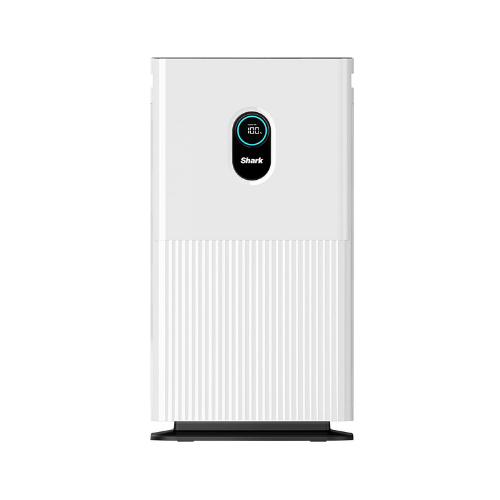 |
Shark HE601 Air Purifier 6✦ Anti Allergen Multi-Filter ✦ Advanced odor guard ✦ Intuitive display panel |
||
Runner Up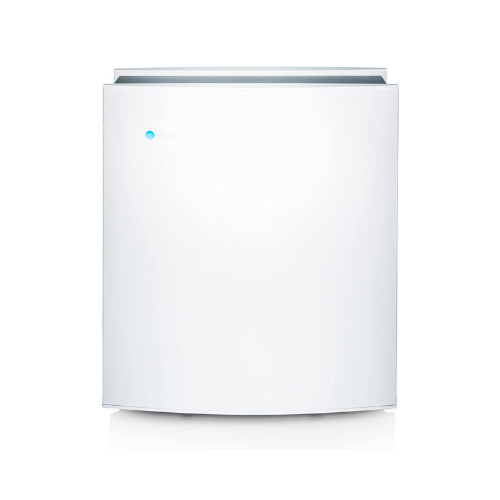 |
Blueair Classic 480i Air Purifier✦ Activated coconut carbon ✦ Integrated Sensors ✦ Wi-Fi enabled |
||
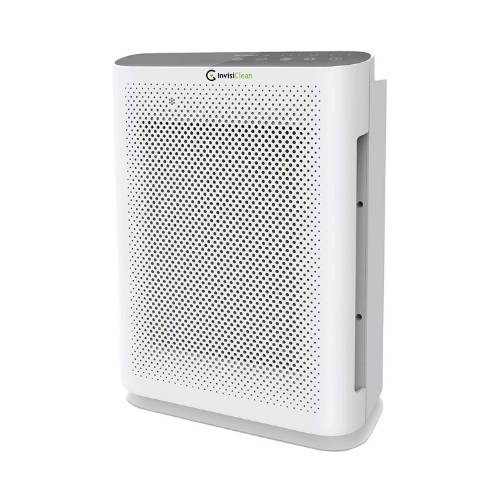 |
InvisiClean Aura II Air Purifier✦ Energy Saving ✦ 4 Levels Of Air Cleaning ✦ Whisper Quiet |
||
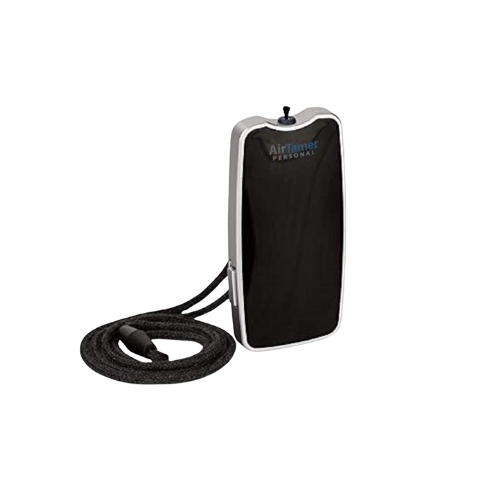 |
AirTamer A310 Rechargeable Personal Air Purifier✦ Portable ✦ Fast Results ✦ 150+ hours on one single charge |
||
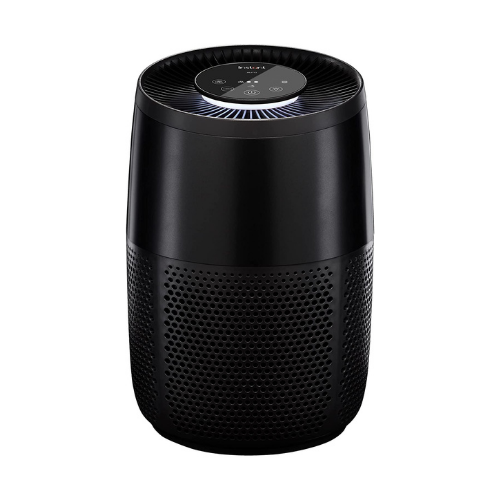 |
Instant HEPA Air Purifier for Home✦ Ozone Free Technology ✦ Reduces Unwanted Scents ✦ Whisper Quiet |
||
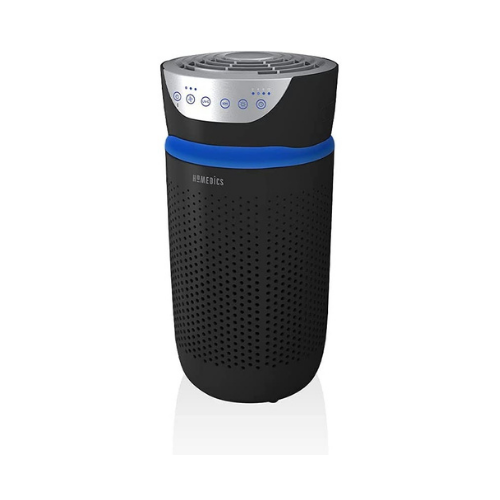 |
Homedics TotalClean Tower Air Purifier ✦ Built-in timer ✦ Customized Programming ✦ UV-C technology and HEPA-type filtration |
||
 |
Westinghouse 1701 HEPA Air Purifier✦ HEPA filter combined with patented NCCO technology ✦ Kills 99.95% of virus and bacteria ✦ Removes dog and cat hair |
1. Shark HE601 air purifier – Top pick
The Shark HE601 air purifier is a behemoth of an air purifier with power capabilities. It can cater to most of your cleaning needs with many features that make it one of the most impressive air purifiers currently available in the market. This air purifier is a clear winner as the best air purifier for viruses in 2022.
It has six high-speed micro-fans that work in unison to distribute the airflow evenly. The ultra-fast and ultra-quiet air purifier ensures an incredibly high CADR. The unit’s Clean Sense IQ tracks air quality and adjusts the power automatically for consistent performance. It has a control panel that displays data in real-time. Its anti-allergen HEPA multi-filter captures 99.98% of airborne pollutants. Additionally, it has an odor protection feature that reduces odors from cooking, smoking, etc.
Things we liked:
- It features six mini fans that offer evenly distributed airflow over the filter. It can efficiently clean a room in record time.
- This air purifier can cover a massive area of around 1200 square feet.
- The raw power doesn’t come at the cost of your peace. This air purifier operates at whisper-quiet volumes that ensure a good night’s sleep.
- It has intelligent settings that automatically track your air quality and adjust settings accordingly. All of this information is displayed to you in real-time, allowing you to keep track of your indoor air quality.
- It uses high-end and effective nanoseal HEPA filters with additional odor capabilities. These filters trap micro-particles left out in other air purifiers.
- The remote control makes the system easy to use and gives you complete control.
Things we didn’t like:
- This air purifier doesn’t come cheap and can cost you up to 400 dollars.
- It is fairly large and can be hard to place in smaller households.
2. Blueair Classic 480i air purifier
The Blueair Classic 480i air purifier has HEPASilent technology that uses electrostatic charge and mechanical filtration. It can capture 99.97% of pollutants, including pet dander, dust mites, pollen, etc. The dual protection filters with activated coconut carbon even remove gaseous pollutants and smoke. The system has air quality sensors to monitor indoor air quality in real-time and adjust the fan speed when operating in auto mode.
Moreover, it is WiFi-enabled through a Blueair friend app, and it is compatible with Amazon Alexa. This air purifier is AHAM rated at 434 sq. ft.
You can take total control of your indoor air quality with its smart features while also finding solace in easily replaceable and recyclable parts. This air purifier takes the runner-up position for best air purifiers for viruses in 2022.
Things we liked:
- The Blueair Classic 480i air purifier uses high-quality HEPA filters in combination with an activated coconut carbon filter. It also uses a hybrid mechanical filtration process with an electrostatic charge to remove 99.97% of common airborne pollutants.
- This air purifier has smart sensors that act as an air quality monitor and can adjust the fan speed in real-time.
- The Blueair Classic 480i air purifier is Wi-Fi enabled. It can be controlled through an app and is compatible with Amazon’s Alexa.
- If needed, you can opt for additional filters, with all filters being recyclable.
- This air purifier is certified with common industry standard ratings.
Things we didn’t like:
- The Blueair Classic 480i air purifier is expensive and can cost up to 500 dollars for a larger-sized air purifier.
- User reviews mention that the included smart app is clunky and not user-friendly.
3. InvisiClean Aura II air purifier
The InvisiClean Aura II air purifier is a nifty device that uses several different technologies, making it a 4-in-1 air purifier. It uses a true HEPA filter, ionizer, activated carbon filter, and UV-C light all in one device. With this unit, you get versatility and range, all at an attractive price. The InvisiClean Aura II gets you the most value for money.
Moreover, it eliminates common allergens such as pollen, pet dander, dust, etc. It uses low EMF radiation DV motor that doubles the air output. The InvisiClean Aura II offers complete filtration and germ disinfection capabilities with a replaceable H13 True HEPA filter and an activated carbon filter. It is quiet and highly effective with different speed settings for optimum cleaning.
Things we liked:
- The InvisiClean Aura II purifier uses four technologies in one convenient device. You can choose when to turn on the ionizer or UV light. It offers four functionalities in one device.
- This is a high efficiency particulate air purifier that is energy efficient. It has a DC motor with low EMF radiation and can deliver double the airflow while using 82% less electricity than competitors in the same class.
- This purifier can cover a vast area of 1276 square feet with one air change per hour. With four air changes per hour, it can cover 319 square feet.
- These features may lead you to think that this unit will burn a hole in your pocket, but you can get it for around 100 dollars.
Things we didn’t like:
- Fan speeds have been reported as being louder than expected on high settings. The noisy fan can impact your sleep cycle.
- It doesn’t have an air quality sensor that measures contaminants in real-time.
4. AirTamer A310 Rechargeable Personal Air Purifier
The AirTamer A310 air purifier uses cutting-edge electrostatic technology and emits millions of negative ions. These ions push the harmful airborne contaminants away from your breathing zone.
Think of it as a personal barrier against harmful particles. Whether it’s on your bedside for a good night’s sleep or accompanying you on travels through polluted areas, this air purifier is a handy companion that can provide clean air on demand. It is CARB-certified with a zero-ozone emission, making it safe for personal use.
The AirTamer A310 also offers value for money. It doesn’t need filters, thanks to the negative ions. It can be used by anyone and charged easily. It is a wearable air purifier and can function for over 150 hours without recharge. The AirTamer A310 cleans air on the go, and it is an ideal travel accessory.
Things we liked:
- There is no need to replace or change filters, making maintenance easier.
- The AirTamer A310 air purifier can kill germs with its electrostatic technology.
- It is easy to charge with a USB cable and can operate for up to 150 hours in a single charge.
- The AirTamer A310 is ultra-compact, offers a silent operation, and is a portable air cleaner.
- The product costs around 150 dollars, making it a worthwhile investment for frequent travelers.
Things we didn’t like:
- The AirTamer A310 can’t handle heavy air pollution. Its small size and lack of filters make it great for traveling, but it cannot effectively work in a household.
- This air purifier can only work for a single person and cannot be shared with your family.
- The AirTamer A310 is not as powerful as others and can be a hassle to wear on your body throughout the day.
5. Instant Air Purifier
The Instant air purifier is a sleek cylindrical-shaped unit with 360 degrees of airflow intake. Its advanced 3-in-1 filtration captures 99.97% of air impurities.
The HEPA-13 filter, activated carbon filter, coating, and plasma ion technology work together to purify indoor air. It also has intelligent sensors that monitor air quality and has an auto mode to adjust the air accordingly. The light sensor automatically turns off the display and also lowers noise levels.
It has also been proven to be effective against Covid-19. Although it is small and compact, it doesn’t compromise on quality.
Things we liked:
- The Instant air purifier has multiple filters and technologies, including a true HEPA filter, activated carbon, and plasma ion technology. This combination makes this air purifier effective at eliminating a majority of common airborne contaminants, including viruses. The filters also come with an antimicrobial coating that protects them.
- It is lightweight and portable, weighing only 8 pounds.
- The Instant Air Purifier has intelligent monitoring that tracks air quality and can automatically adjust fan speeds.
- This air purifier costs around 100 dollars and is budget-friendly. It also offers good customer relationships in terms of service and maintenance.
Things we didn’t like:
- This air purifier is not as good at odor removal as other air purifiers in this category.
- The Instant air purifier works better in smaller spaces.
- User reviews have mentioned that the intelligent monitoring system can be erratic and switch between doing too little and doing too much.
6. Homedics TotalClean Tower air purifier
Homedics TotalClean Tower air purifier is an impressive piece of machinery that packs several features into its ergonomic form. It has a 5-in-1 filtration system that includes a pre-filter, HEPA filter, activated carbon filter along with an ionizer and UV-C light. All these technologies work together to provide clean air for your household.
The 360-degree HEPA filtration process removes 99% of allergens as small as 0.3 microns. The in-built carbon filter reduces VOCs and odors. The UV-C technology also helps capture 99.9% of viruses, Escherichia coli Bacteria bacteria, mold, etc. The adjustable settings come with an in-built timer and a 3-speed fan setting.
Things we liked:
- Homedics TotalClean Tower air purifier has several technologies packed into one device.
- It has adjustable settings along with customizable programming that includes lighting.
- It offers 360-degree room coverage.
- It has an indicator to let you know when to change the filter.
- This purifier costs around 130 dollars for a small room which is reasonable for the variety of features offered.
Things we didn’t like:
- The Homedics TotalClean Tower air purifier does not have a 24-hour timer.
- Customer reviews indicate that replacement parts for this air purifier can be difficult to find. It is especially true for the UV-C light bulb.
- Customers report that customer care is subpar, which makes this air purifier harder to maintain.
7. Westinghouse 1701 air purifier
The Westinghouse 1701 air purifier is one of the few air purifiers in this list that uses its own patented technology. The patented NCCO technology (Nano Confined Catalytic Oxidation) uses active oxygen to sanitize, kill, and remove pollutants.
It works by decomposing harmful material into harmless compounds like water molecules and carbon dioxide. It has a 4-stage purification process with a pre-filter, oxygen generator, True HEPA filter, and NCCO reactor.
The Westinghouse 1701 air purifier has a filter indicator to alert you when it is time to change. The air purifier can be effective in a medium to large-sized room.
Things we liked:
- Medical grade and high-quality HEPA filters are combined with a revolutionary NCCO technology to eliminate 99.99% of bacteria and viruses.
- It can cover an area of around 300 square feet which is suitable for most medium to large rooms in households.
- The Westinghouse 1701 air purifier effectively eliminates viruses and can also handle odors, volatile organic compounds, allergens, dust, and other common pollutants.
Things we didn’t like:
- The Westinghouse 1701 costs around 250 dollars, which is rather expensive for an air purifier of this capacity
- The patented technology is not common in the industry and cannot be proven with standardized metrics.
Things to consider before buying an air purifier for virus
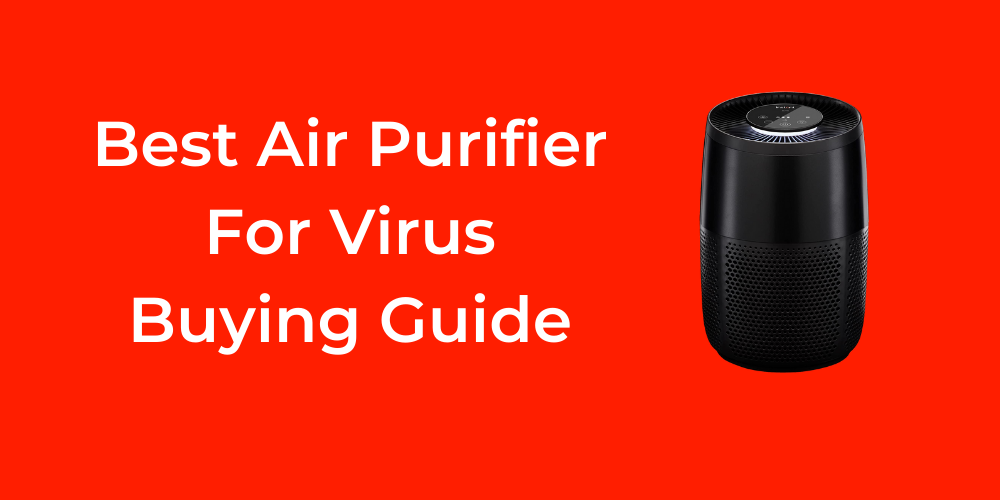
Before you purchase an air purifier for eliminating viruses in your home, there are a few things you should keep in mind.
The first consideration is what technology your purifier uses to function. These days, several air purifier manufacturers combine different technologies in one device. You can ask yourself whether smoke and odor are as big a problem for you as viruses. Perhaps pet hair and dust are more common in your area.
Whatever your cleaning requirements may be, an air purifier can cater to them. Ensure you prioritize your cleaning expectations and then find a manufacturer that makes an air purifier that caters to your specific requirements.
For example, if smoke and odor are a problem, you should ensure your purifier has an activated carbon filter. If viruses are your top priority and you can afford a large investment, you should go for a PECO air purifier.
While considering technologies favor practical aspects over extra features. For example, smartphone connectivity is convenient but not essential. It is better to get a quiet unit even at high fan speeds than one that is voice-activated.
The second consideration is to make sure that your air purifier can cover the area of your room. There are several ways to know if an air purifier will perform well in your room. You can determine this by looking up the air purifier’s CADR rating. CADR stands for clean air delivery rate. It is a standardized and lab-tested metric that is independently provided by American Home Appliance Manufacturers(AHAM).
You should ensure that your air purifier’s CADR rating is around two-thirds the size of your room. This ensures that your air purifier is not too small or too big for your room.
After you’ve picked out your air purifier, you should place it in your household so it can function effectively. Make sure it is out of reach of your children and pets. Air purifiers are most effective in closed spaces and within your breathing zone. Find the balance where the air purifier won’t get in your way but can still function efficiently.
Lastly, consider the maintenance and electricity costs your new air purifier needs to function. You’ll have to change your air filter between three to six months after buying your air purifier. Make sure that you have easy access to replacement parts.
Your air purifier will have to be on all the time to deliver the best results. As such, make sure you read up on the energy efficiency of your air purifier so you can avoid a nasty surprise when you get your utility bills.
5 tips on how to purify air to kill virus without an air purifier
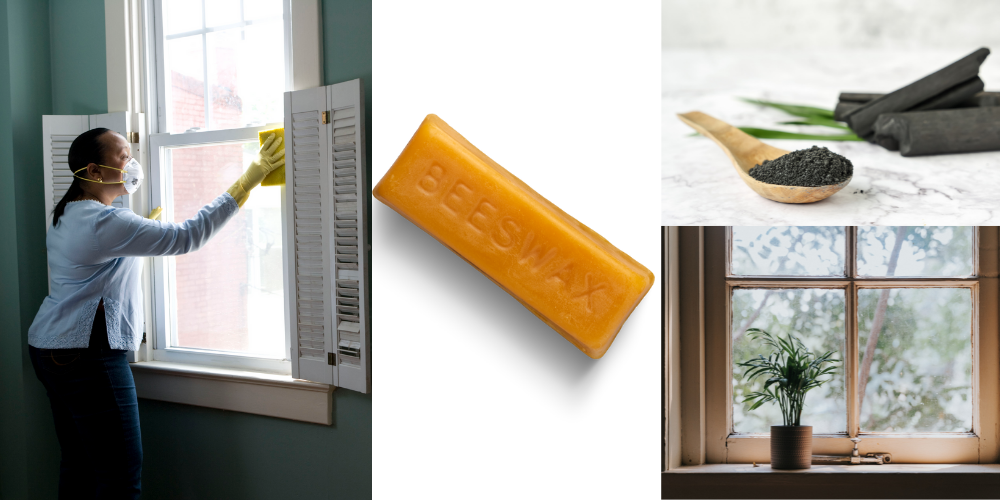
Air purifiers are the most effective way to consistently deliver clean and good quality indoor air. However, they can be an expensive investment. Not having an air purifier doesn’t mean that there are no other air purification options available. Here are five tips to purify the air and kill viruses without an air purifier.
Tip 1 – Ventilation
Increase the ventilation in your household. A well-ventilated room can reduce moisture levels, a leading cause of mold and other factors that reduce indoor air quality. Opening your windows may allow some fresh air to enter and remove stale air from your home, but it may also bring in a little air pollution.
Instead, you can use strategically placed vents and exhaust fans to circulate air in your household and help carry pollutants outside. Make sure you keep your kitchen well ventilated, especially if you are using a gas stove for cooking as they produce nitrogen dioxide. Also, make sure your bathrooms are well ventilated to prevent dampness from causing mold and mildew.
Tip 2 – Use beeswax candles
Replace your regular candles with beeswax candles. Beeswax candles are natural air purifiers and do not emit harmful chemicals like petroleum-based paraffin candles. Beeswax can ionize the air and neutralize toxic components. They don’t emit scent or smoke and can be useful in reducing allergens for asthmatic patients.
Tip 3 – Use salt lamps
Salt lamps are great natural air purifiers. They pull water vapor out of the air and can reduce airborne pollutants in your household. Pink salt is a natural ionizer that pulls toxins from the air and neutralizes them. The added benefit of salt lamps is that they can add to the decor of your household and look attractive. The glow of salt lamps doesn’t disrupt sleep homes like electrical lamps do. Salt lamps are more effective when turned on but even work to purify the air when they are off.
Tip 4 – Activated charcoal
You can use activated charcoal as a natural air purifier. Activated carbon filters are a byproduct of this concept. It is odorless, highly absorbent, and helps remove toxins from the air.
Tip 5 – Add houseplants
Increase the number of houseplants in your household. Plants naturally convert carbon dioxide into oxygen. They don’t release any harmful byproducts and can work wonders to rejuvenate and clean the air in your house. A single plant for every 100 square feet of your house will result in improved air quality. Plants are affordable, aesthetic, and natural solutions to have good indoor air quality in your household.
Do HEPA filters block coronavirus?

HEPA filters are the industry standard for high-quality filters. They are made of interwoven glass fibers that create a maze to trap airborne particles. Since coronavirus is airborne, it stands to reason that HEPA filters can trap corona particles, though it depends on the size of particles.
The particles of coronavirus measure around 0.125 microns and good HEPA filters can trap particles as small as 0.01 microns. This means that a high-quality HEPA filter does have the potential to trap corona particles.
Some air purifier manufacturers and test results state that their filters can trap particles as small as 0.3 microns. If this is the case, corona particles can pass through the filters. NASA studies have shown that HEPA filters can be 100% efficient at capturing ultrafine particles at 0.01 microns. It shows that HEPA filters perform better than the advertised standard of 0.3 microns. The CDC acknowledges that an air purifier, when used properly, can greatly reduce airborne contaminants like viruses.
This doesn’t mean that a HEPA filter is a foolproof method to avoid the coronavirus. If someone who is Covid positive visits your house, it is unlikely that an air purifier on the far side of the room can prevent you from contracting the virus.
HEPA filters can help reduce exposure from external sources and eliminate other common viruses in your household. It is best to follow CDC guidelines and maintain all safety protocols, including regularly washing your hands and practicing social distancing.
Our verdict:
Our verdict for the best air purifier for viruses in 2022 is the Shark HE601 Air Purifier.
It is a feature-packed powerhouse of an air purifier. It features six mini fans that work together to distribute airflow across the filter. It works quickly and efficiently to cover areas as large as 1200 square feet. Its high-quality filters capture more micro-particles than other competitive purifiers. This makes it efficient in covering more types of harmful particles, including bacteria and viruses.
The Shark HE601 monitors air quality in real-time and can adjust settings automatically to deliver the best cleaning results. You can take control and keep track of your indoor air quality with simplicity and ease. All of these features make this unit our top pick among the best air purifiers for viruses in 2022.
FAQ Section
1. Do ionic air purifiers kill viruses?
Ionic air purifiers work by attracting harmful particles with other particles that are charged with ozone. Particles are sealed in a collection plate. This technology is very different from traditional air purifiers that rely on mechanical filters.
Ionic air purifiers have been known to prevent the growth of viruses. They trap harmful particles but do not destroy or kill the virus completely. Since virus particles are usually much smaller than other contaminants, ionic purifiers are not the most effective at trapping viruses.
Good HEPA filters are more effective. If you want an air purifier that can kill viruses, you can opt for a PECO air purifier that destroys harmful particles with free radicals.
2. Do air purifiers help with sickness?
Air purifiers cannot cure an illness, but they can help prevent it. There are several health benefits to having an air purifier in your household. They can help with respiratory problems and alleviate asthma and allergy symptoms. They can prevent the spread of illness by trapping contaminants. Air purifiers cannot eliminate sickness, but they can definitely help by reducing symptoms.
3. Can plants help clean indoor air?
Plants are the best natural air purifiers. They convert carbon dioxide to oxygen naturally and do not emit any harmful byproducts in the process. One plant for every 100 sq. ft. can improve your indoor air quality. They add to your household decor, are affordable, and are fairly easy to maintain. The answer to whether plants help clean indoor air is a resounding yes.
4. What kills germs in the air?
UV-C light is used industrially in hospitals to keep them disinfected and germ-free. The same technology is applied and modified into air purifiers to help kill germs. This is one of the most common and standardized ways to kill germs in the air.
Final Words:
Health and wellbeing have come more into the collective focus in the wake of a worldwide pandemic. Air purifiers have been used to reduce airborne contaminants for several years prior to the pandemic. It is only natural to question how effective air purifiers are at eliminating viruses, such as the coronavirus. The air purifier industry has answered the demand for products that can keep you safe in current times.
While good indoor air has always been the priority for air purifier manufacturers, the focus is shifting to ensure that air purifiers can safeguard your family against viruses and an ever-growing number of other harmful contaminants. Technology has evolved over the years, and modern air purifiers can keep your family safe from far more threats than the common dust and allergens.
With several different types and brands available in the market, it can be difficult to pick the correct air purifier to match your unique requirements. Hopefully, our review and other pertinent information about air purifiers will make it less daunting when you decide to invest in an air purifier.

About The Author
Olivia — a self-confessed air quality addict — is a home climate enthusiast, fresh air advocate, and someone with deep personal experience and knowledge about mold extermination. Her work was mentioned in countless notable humidity publications. Previously she was an editor at Mold Remediation.
